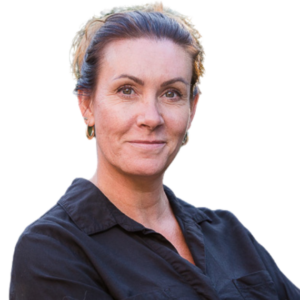Q: What was the main take-away?
Mischa: The positive was that the course is comprehensive. It covers a lot.
Rosanne: The challenge was the reverse: it’s a lot of content in a relatively short period of time. It can be hard to absorb.
Mischa: What people remembered most were the shared experiences from fellow learners and facilitators. But in an online course, there’s limited time to hear that.
Q: How did you solve that, in this updated version? A lot to cover, but limited time? People want to hear from each other, but again, time is short.
Mischa: We knew the need for anecdotes and real-life experience was key. We just had to make the time for that, because it’s those stories, those real experiences, that people remember.
Rosanne: It’s important to learn from each other, and to keep learners more focused. It’s hard to watch a screen for two hours, so having exercises in between to engage helps.
Mischa: We took Humentum’s eFacilitation course where we learned how people learn, including lots of great tools for interaction. As humans we do that by exchanging learning, instead of mainly listening.
Rosanne: And then we had to balance that with the bulk of the content, plus with a global audience you have to be conscious of different norms, as well as with different computer skills.
Question: Did you change anything else, in addition to adding the time for interaction?
Rosanne: Yes, we made the curriculum, the flow of the course, follow the award cycle. That way the information you’re learning synchronizes with how the rules and regulations are set up online, and chronologically the course flows with how a project would flow.
Mischa: And back to the interaction, now that we have the topics more clustered, it should be easier to share experiences in breakout rooms.
Q: Another big change to this course is making sure learners can find and navigate the regulations online. Why is this important?
Mischa: It’s important to know what is applicable to your organization and your award and where you can find it. The good thing about finding it online is that it’s linked to other websites, so you always receive the most up-to-date information
Rosanne: Quite different from the big handbook that used to be given out — this saves a lot of paper! But the main benefit is that it lines up topics with the rules and regulations. We ask the learners to bookmark the pages that are most important. We’ve built exercises around going onto the site, looking up a reg and then explaining it.
Mischa: It’s very practical. You’ll know where you need to go to find information, quickly.
Q: What should people know before signing up, if anything?
Mischa: Expect breakout rooms in each session, quizzes to check understanding, plenary sessions. It’s a mix. Plenty of variety.
Rosanne: Also, if they have an award, bring it. Although we won’t go into all individual awards, it will be useful to have that information. Even without an award, have an idea (if possible) of what your role in the project is or will be: prime recipient, sub-recipient. It will help you navigate if you know that. Even if you don’t know specifically, come with an idea of what role you anticipate you and your organization having.
Mischa: They should know you don’t need prior experience with USAID; we’ll explain what it is. In fact, this is intended to be a basic, more general course. If you’re an expert in procurement, you may need to take another course that’s more in-depth, like a USAID procurement course.
Rosanne: Yes, and speaking of roles, ideally have multiple people from the organization take the course at the same time. People from finance, operations, the person with overall responsibility for the project.
Q: What are the top benefits a participant can get from this updated training?
Mischa: You’ll come away understanding your role and responsibilities as a recipient of USAID funding. Even more than understanding, you’ll be more confident in understanding the regulations which helps in communication with USAID and with your partners (prime or sub).
Rosanne: Yes, even if you can’t remember a specific rule or regulation, you’ll know where to go to find it. You’ll know what applies to you and what doesn’t, what you are and aren’t responsible for. You won’t waste time looking up something only to find it isn’t relevant.



